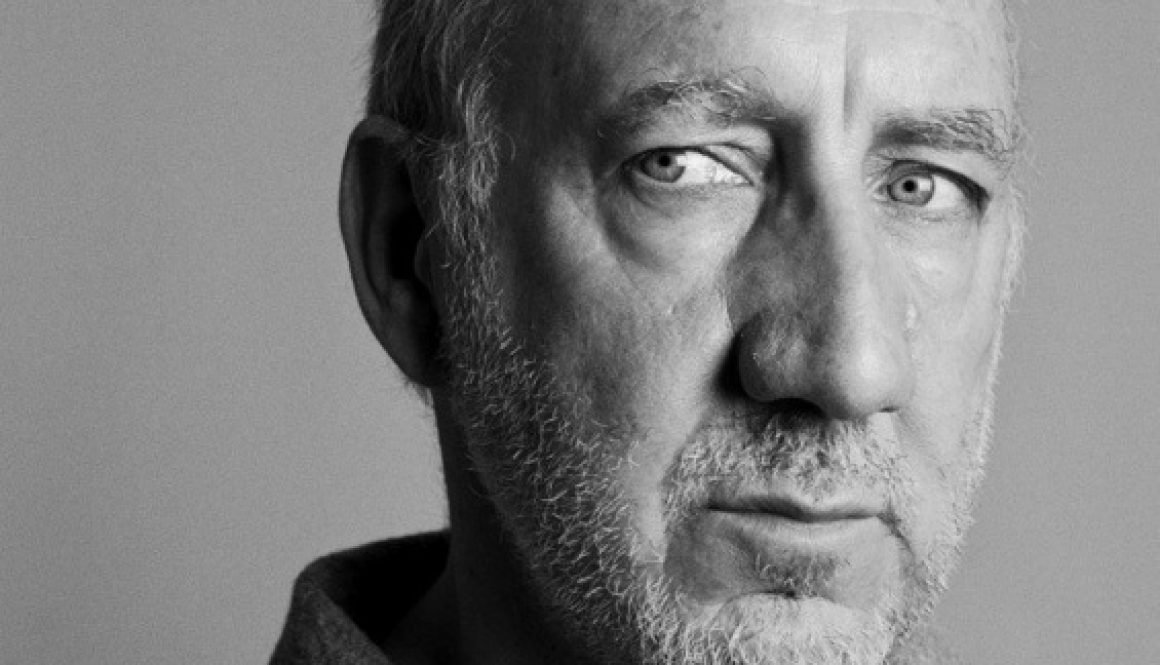Pete Townshend – Music Biography

In his first band, he played Dixieland banjo. And while he has long been Rock “˜n’ Roll’s poster child for the dangers of constant exposure to incredibly loud music, he also was one of the biggest inspirations for the “unplugged” movement of the 1990’s. He may not be the first guitarist one thinks of when choosing an “all-time greats” list, but he has influenced almost every rock guitarist that you end up putting on your list including Jimi Hendrix, Alex Lifeson and Slash.
Peter Townshend was born in 1945. His father was a professional sax player and his mother a singer. He enjoyed music of all types but was particularly fascinated with early Rock “˜n’ Roll music and well as blues. He got his first guitar, a cheap nylon string affair, from his grandmother when he was twelve years old. While in Acton County Grammar School, he made the friendship of John Entwistle and the two would eventually form a Dixieland duet with Townshend on banjo and Entwistle on horns. Entwistle gave Townshend a lot of encouragement during his early years on the guitar and it was through his friend’s assistance that Townshend was invited to join the skiffle / rock band, The Detours as rhythm guitarist. The band’s lead guitarist was a friend of Entwistle’s named Roger Daltrey.
The Detours went through numerous personnel changes and eventually became a four-piece band with Daltrey on vocals and harmonica, Entwistle on bass, Townshend on guitar and Keith Moon on drums. They also changed their name to “The Who,” because they discovered there was already a band using the name of The Detours. For a brief period of time they went by the name “The High Numbers,” even releasing a single (“I’m the Face”) under that name, but changed back to the Who after hiring Chris Stamp and Kit Lambert as their new managers.
The Who had a strong local following in London particular among the “Mods,” who loved the band’s unique blend of rock and R&B stylings. But they were still just another band in the crowded British music scene until one evening in September 1964, when Townshend accidently broke the head of his guitar on the low ceiling of the Railway Tavern during a show. Angered by both the damage to the guitar as well as the reaction from the crowd, he smashed the guitar to pieces, picked up another on and went on with the rest of the show. Needless to say, a huge crowd turned up for their next performance. And while Townshend didn’t smash his guitar that night, Moon couldn’t resist the attention (not to mention the chance at destruction) and wrecked his drum set.
Although each member of The Who contributed as songwriters – Daltrey and Townshend even collaborated on the single “Anyway Anyhow Anywhere” – it was Townshend who emerged as the group’s primary tunesmith. And his song, “My Generation” did as much to set The Who apart from the crowd as destroying their instruments on stage did. Loud, fast and angry, it peaked at #2 in the British singles charts, the highest the band would ever do in their home country.
Looking closely at “My Generation” will also give you some ideas as to how Townshend would evolve as a songwriter for the band. Unlike most guitarists in rock bands, who usually write songs to showcase their playing abilities, “My Generation” defers to the bass and drums for the fireworks while the guitar provides the rhythm crunch and also delivers some serious feedback throughout the frenzied finale of the song. Townshend was one of the first guitarists to incorporate the use of feedback into his live playing and though John Lennon beat him at putting feedback on vinyl, one can’t deny that you get a lot more sonic fireworks on display at the end of “My Generation” when compared to the opening of the Beatles‘ “I Feel Fine.”
Townshend’s ability to write to the strengths of all the other band members helped to make The Who the act you had to see live in performance. The Who not only inspired and influenced rock bands such as Led Zeppelin, Queen, The Clash, Cheap Trick and U2, they also served as a template for bands like The Jam and Oasis as well as punk rockers like the Ramones and The Stooges. And Townshend is also credited with bringing the synthesizer to the forefront of rock music, most notably with the band’s 1971 release, Who’s Next, which hit #1 on the British album charts.
The Who also took the idea of the “concept album” to a whole new level with Townshend’s rock opera, Tommy, as well as 1973’s Quadrophenia. But in addition to the rock anthems, like “Baba O’Reilly” and “Won’t Get Fooled Again” and the rock operas, Townshend created intensely personal music as well, as evidenced by the superlative The Who By Numbers (the top ten hit “Squeeze Box” notwithstanding!).
In June of 1979, Townshend performed for “The Secret Policeman’s Ball,” a benefit show for the human rights group, Amnesty International. His acoustic renditions of “Pinball Wizard” and “Drowned” (from Tommy and Quadrophenia respectively) and of “Won’t Get Fooled Again,” made available through recordings of the show not only inspired other artists such as David Gilmour, Sting, Bruce Spingsteen, Bob Geldof, Peter Gabriel, and Bono to participate, but also paved the way for the many “unplugged” concert formats that would come during the next decades.
Townshend continues to perform, write and collaborate. As a member of The Who, he was inducted into the Rock and Roll Hall of Fame in 1990. And whether or not you’ve thought all that much about him as a guitarist, his influence can be heard in the music of the last forty-five years and will probably inspire musicians for generations to come.
